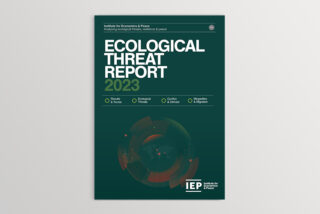The Ecological Threat Report (ETR) produced by the Institute for Economics & Peace covers over 3,594 sub-national areas or 99.99% of the world’s population; assessing threats related to food risk, water risk, rapid population growth and natural disasters.
The key finding from the 2023 ETR is that without concerted international action, current levels of ecological degradation will substantially worsen, thereby intensifying a range of social issues, such as malnutrition and forced migration. IEP estimates that by 2050, 2.8 billion people will reside in countries facing severe ecological threats, compared to 1.8 billion in 2023, with 1.1 billion of these people living in countries with low societal resilience.
Here’s a brief overview of the 8 key findings from the 2023 Ecological Threat Report.
1. 45% of the countries in the ETR are facing at least one severe or high ecological threat.
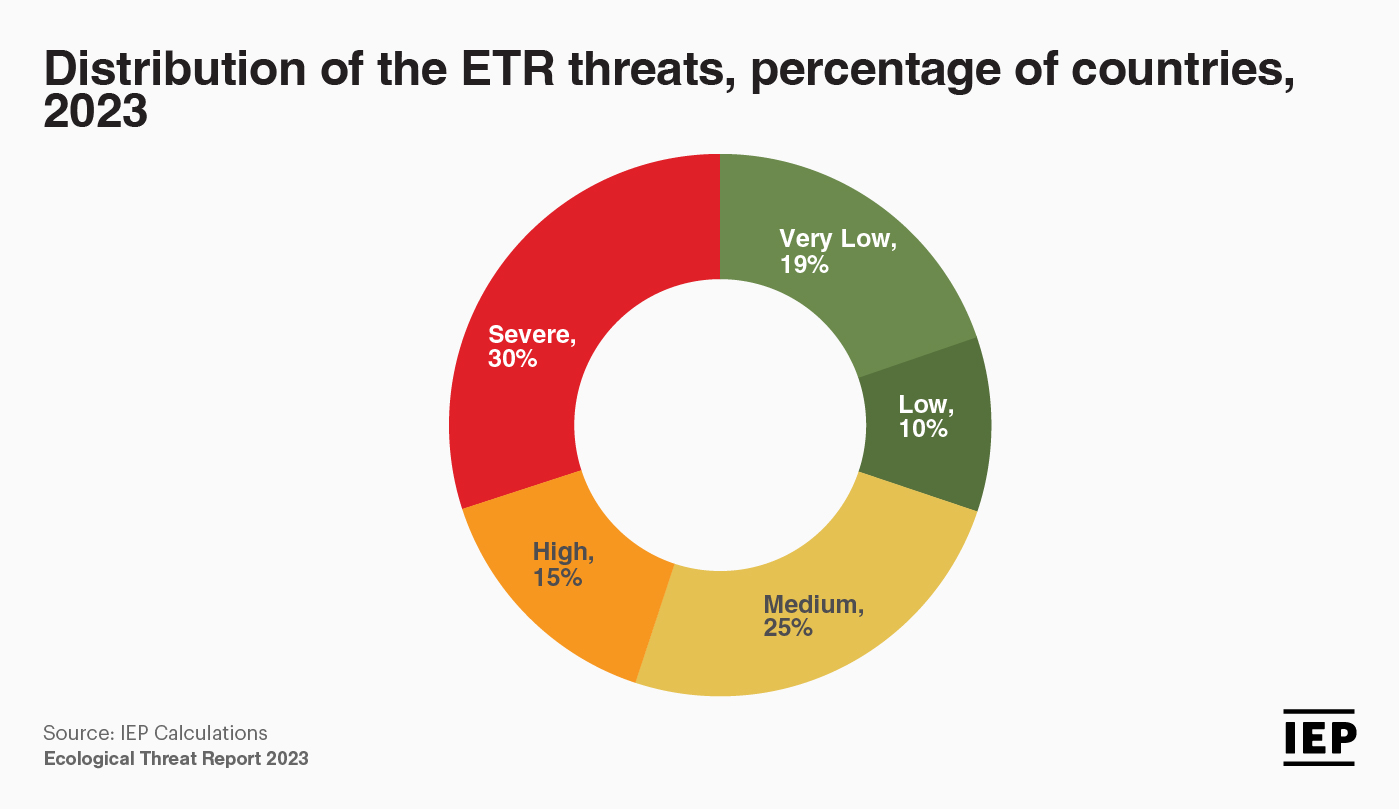
Of the 221 countries in the ETR, 30% have at least one severe ecological threat. These countries are home to an estimated 1.8 billion people or 22% of the global population. By 2050, this figure is projected to rise to 2.8 billion people. While not all of the population of these countries will suffer from the direct impact of adverse ecological events, the indirect impact will be felt widely. This is especially the case if the countries are facing conflict, civil unrest or poor governance. Displacement of persons and competition for food and water resources may cause the impact of the original shock to transcend across national, and even continental boundaries.
2. Countries with very low levels of Positive Peace have a fatality rate seven times higher than those with very high levels of Positive Peace after experiencing a natural disaster.
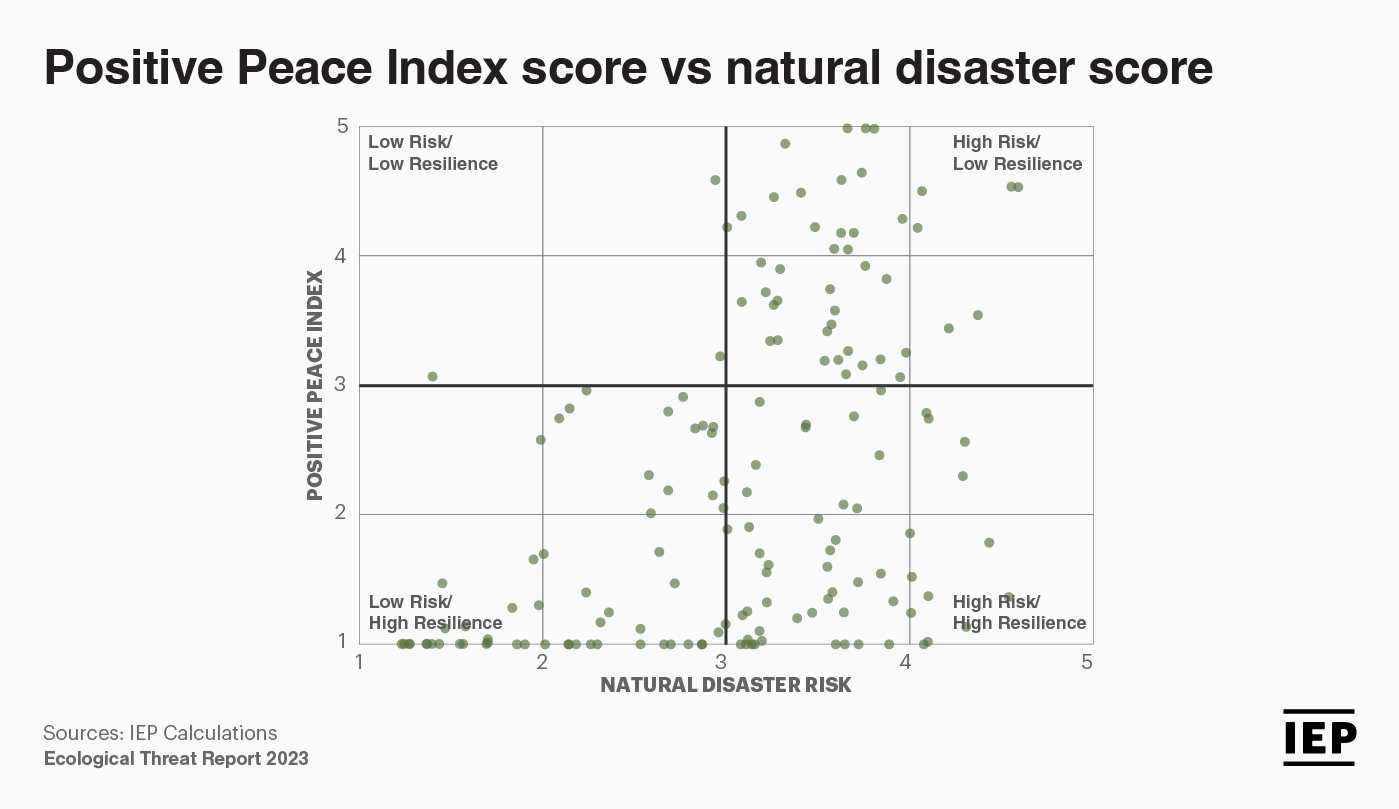
While most countries, irrespective of their resilience level, face a low risk of natural , 44 countries both high disaster risk and low resilience. This means that they are unlikely to be able to cope following an extreme event, creating the risk of a serious disaster. These countries are home to over four billion people.
3. The Global Food Price Index is currently 33% higher than in 2016, after successive increases of 35% following COVID, and then a further 18% following the Russian invasion of Ukraine.
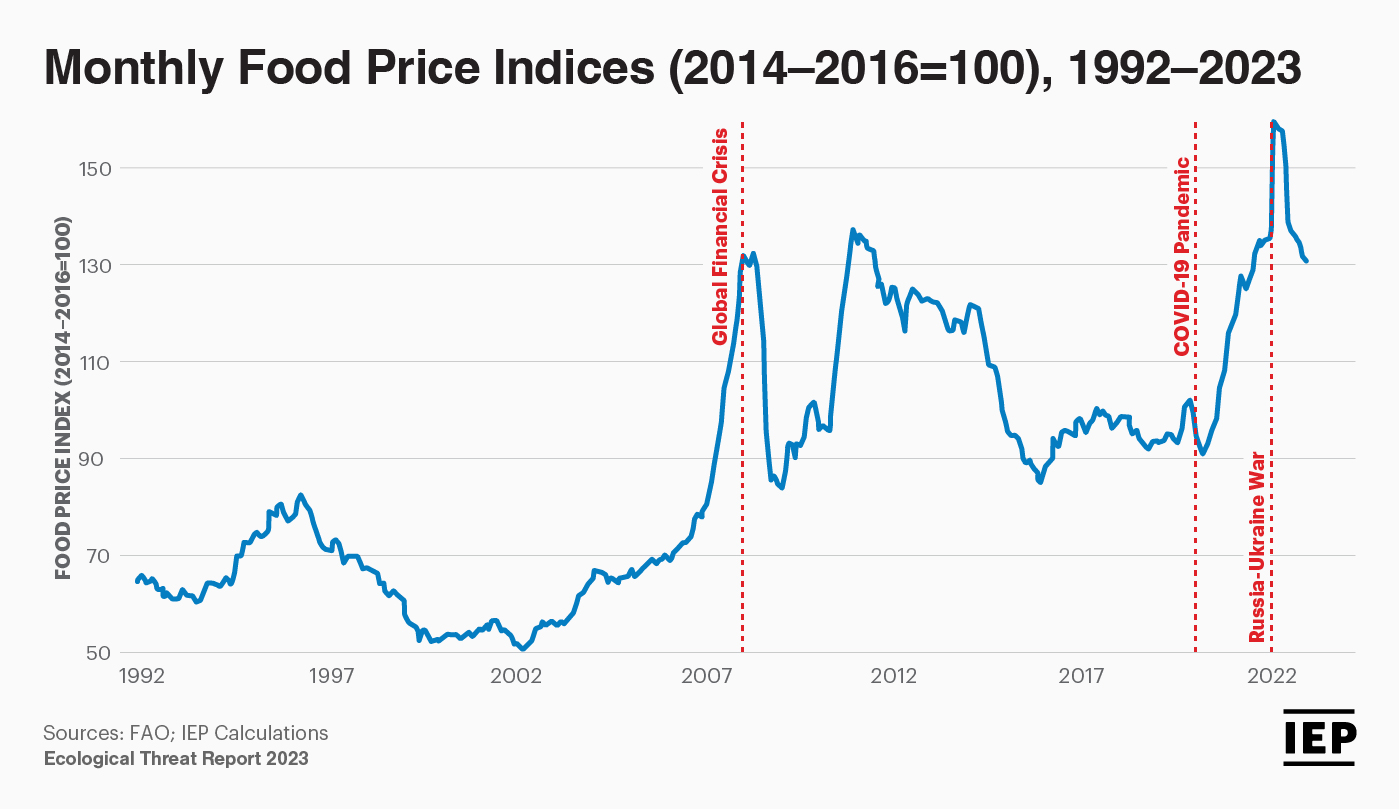
Many countries rely on food imports for food security, which means they depend heavily on international trade routes and supply chains. As such, major international events can impact the food security of many nations. The figure above shows the trend of the FAO Food Price Index for the period between 1992 and 2023, along with major global events over the period.
After the 2007 Global Financial Crisis, food prices rose by up to 40% in the following 12 months. In the two years following the WHO’s declaration of the COVID-19 pandemic, global food prices rose by 35%. In the month after the Russian invasion of Ukraine, the Food Price Index rose by another 18%, and as of July 2023 it remains 25% higher than pre-pandemic levels.
4. Two billion people live in areas without access to safe drinking water.
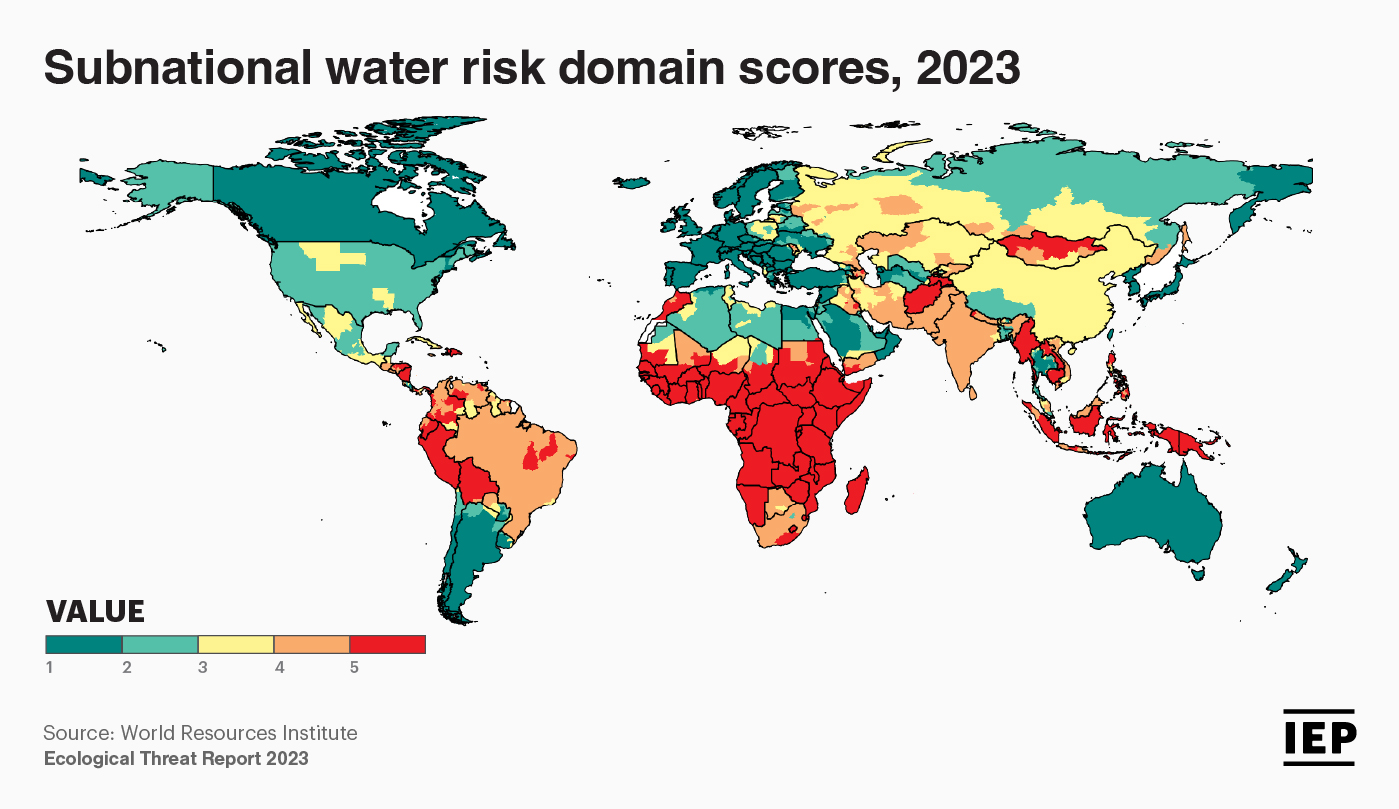
Water risk is one of the most significant ecological threats the world is currently facing. 2 billion people globally live in areas that lack access to safe drinking water while 2.6 billion lack access to safe sanitation. Water stress impedes economic development and food production, which further compromises the health and well-being of the population. In the ETR water risk is measured by looking at the percentage of the population of the subnational areas that has access to clean drinking water.
5. Forty-two countries are facing severe food insecurity.
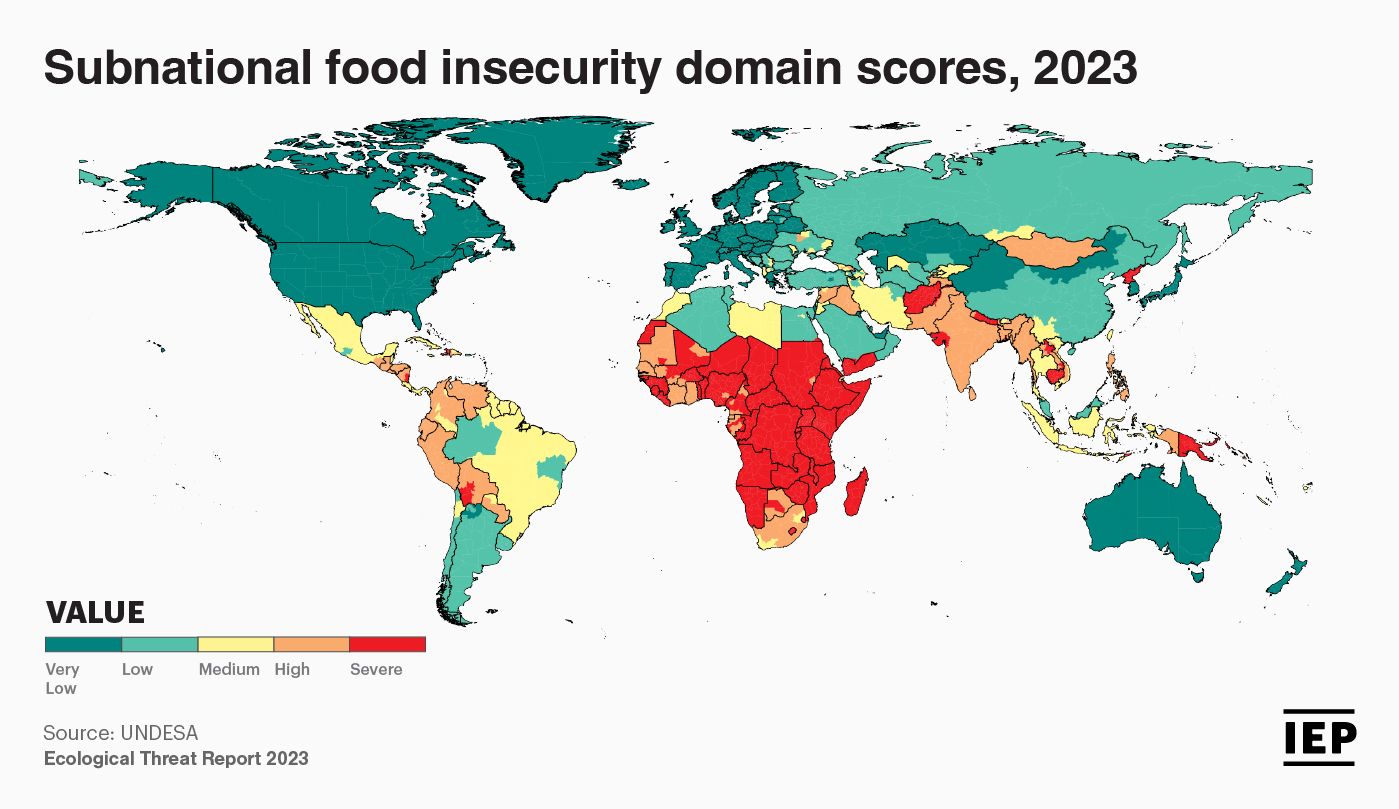
The ETR identifies 42 countries as facing severe food insecurity. More than 65% of the population have been unable to afford food for their family at some point in the past year. When large proportions of a country’s population lack food security, economic development and societal cohesion are adversely affected.
6. Ecological threats have the biggest impact on conflict in regions like the Sahel, which face major deficiencies in governance and rule of law, high levels of poverty and short-term climatic variations.
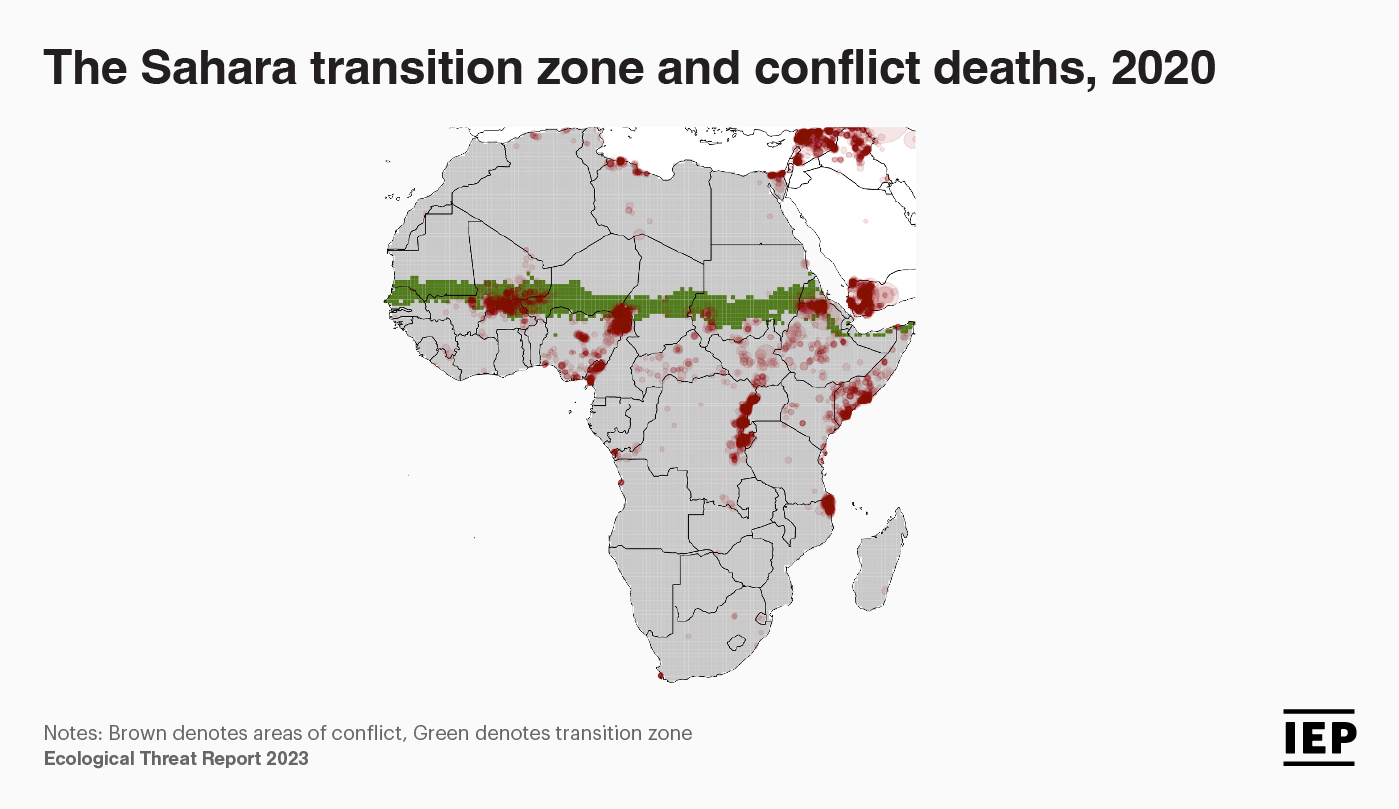
Transition zones, like the Sahel, are particularly prone to conflict. Permanently harsh climatic zones are less likely to experience conflict compared to these transitional zones which experience more variability and are more prone to precipitation shocks affecting important agricultural zones.
The figure above shows the Sahara transition zone and total conflict deaths in 2020. The transition zone accounts for 7.6% of the total land mass, but just under 16% of total deaths. Nearly 15% of all transition zone areas recorded at least one death, compared to just 5% of all non-transition zones.
7. The percentage of people globally living in urban areas is expected to grow from 54% to 70% by 2050. The number of people living in cities will grow by 2.5 billion by 2050.
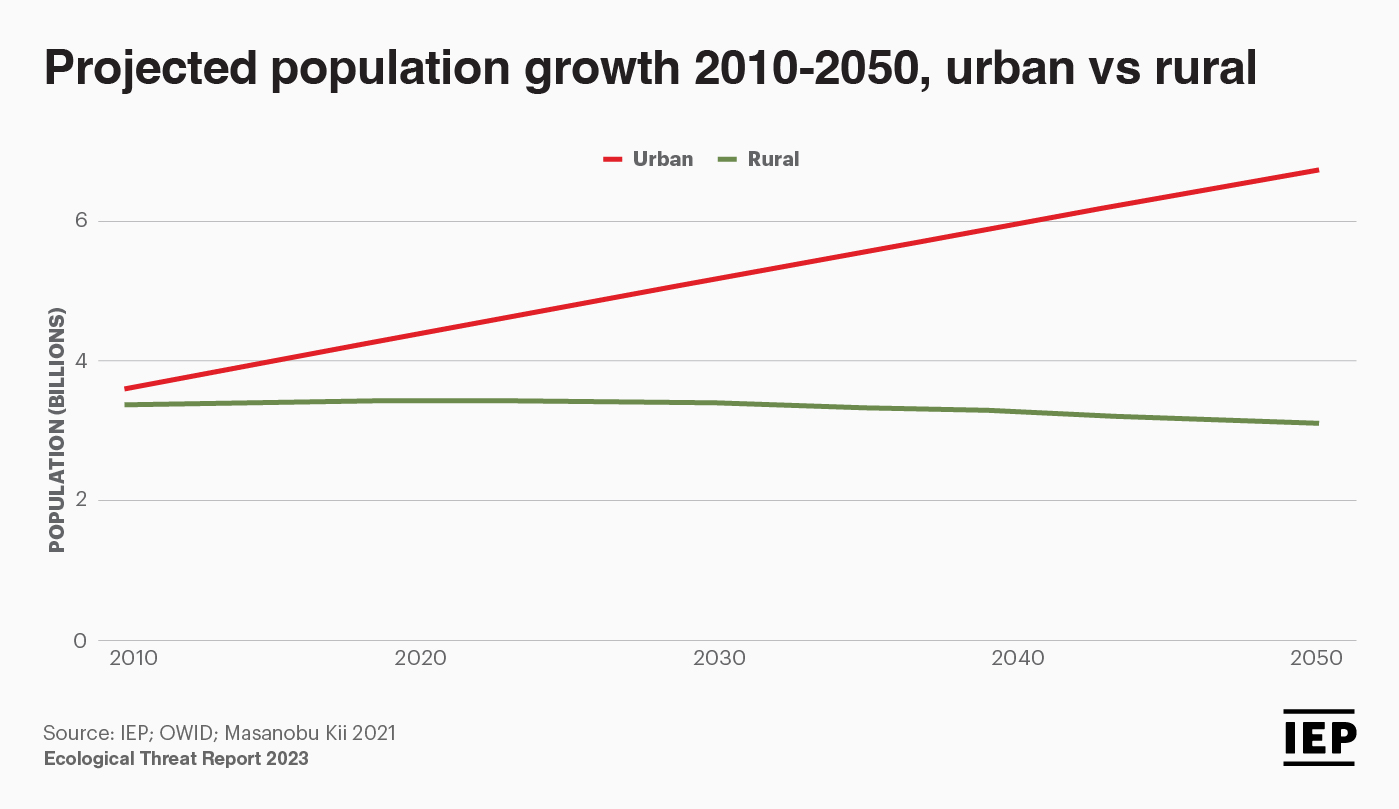
The world’s rural population will decline slightly, while the urban population will grow steadily, highlighting that all the population growth that occurs in the next 25 years will take place in cities.
It has become evident that when cities grow fast, they can become unstable, with population growth outpacing infrastructure development. This can lead to increased crimes, poverty, slums and other informal residences.
8. Most refugees and displaced people move into cities. More than 60% of all refugees and 80% of internally displaced people move to cities.
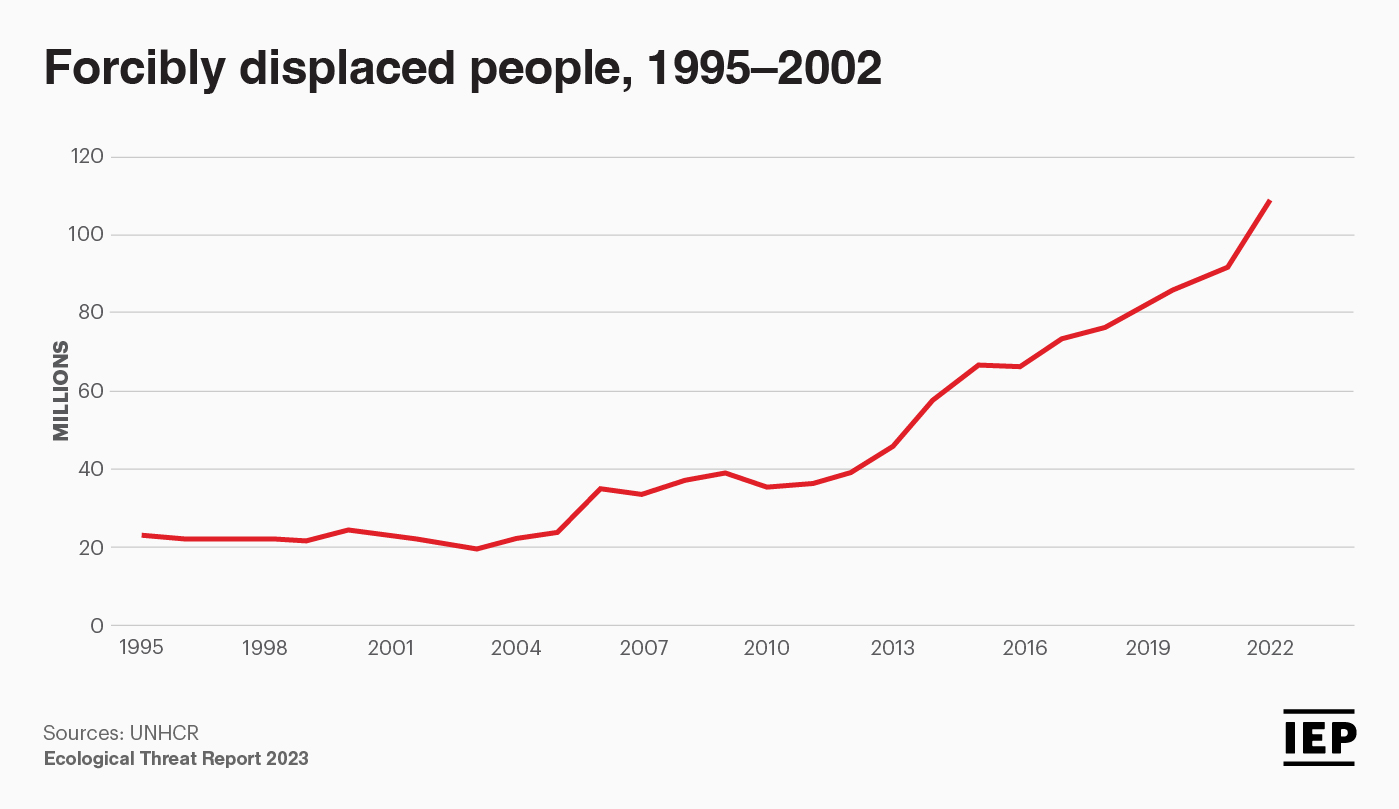
Migration will be a considerable challenge for rapidly growing cities in the near future, especially as a result of forced migration and population displacement. There were over 108 million forcibly displaced people as of the end of 2022.
Most displaced people end up in cities. It is estimated that 60% of refugees and 80% of internally displaced people are living in urban areas, up from an estimated 30% in 1990.
Download the full 2023 Ecological Threat Report.
Ecological threats will continue to create humanitarian emergencies, increase conflict and result in forced migration, unless there is a sustained effort to reverse the current trend. Ecological threats are becoming more pronounced and affect more people than ever. Building resilience to these threats will require substantial investment now and into the future.
